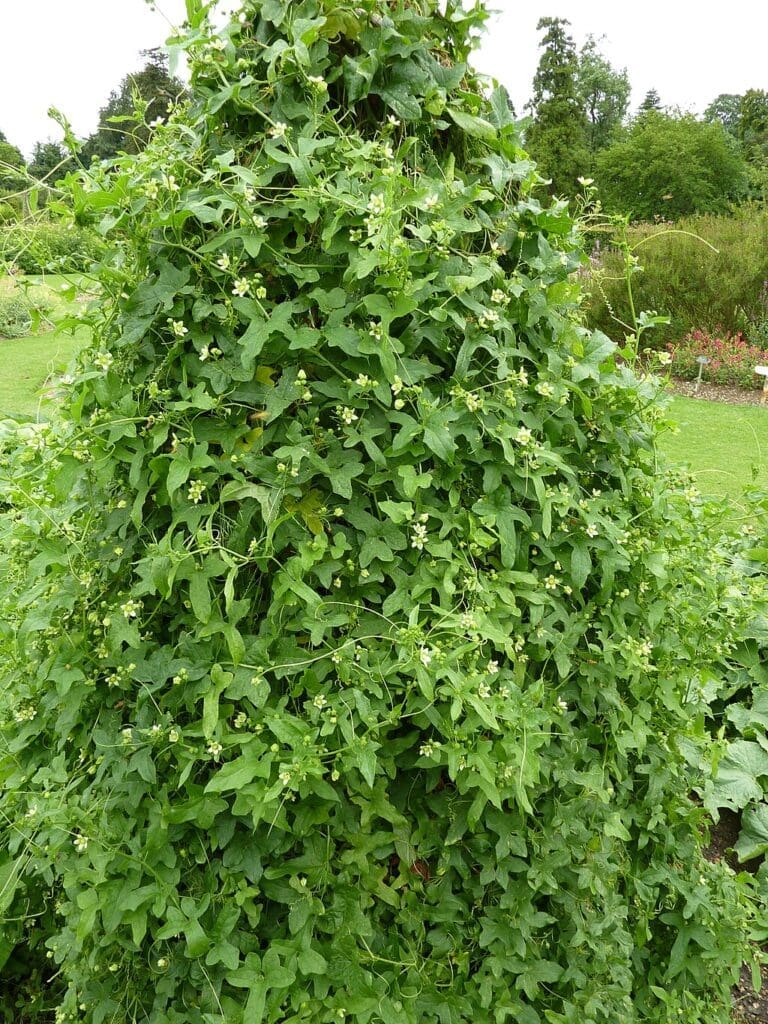
Bryonia alba
Latin name: Bryonia alba
Short name: Bry
Common name: White bryony | Wild hops | Devil’s turnip | English mandrake | Wild vine
Primary miasm: Psoric
Kingdom: Plants
Family: Cucurbitaceae
- Symptomatology
- Remedy Information
- Differentiation & Application
Bryonia alba is a climbing perennial plant native to Europe and Northern Iran, belonging to the cucumber (Cucurbitaceae) family. It contains powerful active compounds, including bryonin and cucurbitacins, which have strong irritant properties. The tincture is prepared from the fresh root harvested before flowering, which in crude form is a strong cathartic and emetic.
Used in herbal medicine for centuries as a purgative, diuretic, and treatment for respiratory ailments. However, due to its toxic nature in crude form, it has fallen out of modern herbal usage. Some traditions applied it topically for joint pain and gout.
First proved by Samuel Hahnemann and introduced in the Materia Medica Pura (1811–1821). The proving highlighted its strong effects on serous membranes, joints, mucous linings, and the gastrointestinal tract.
- Serous membranes (pleura, peritoneum, synovium)
- Joints and synovial fluid
- Mucous membranes (especially respiratory and digestive)
- Right side
- Gastrointestinal tract
- Lungs and chest
- Liver
Absolute rest; pressure; lying on the painful side; warm applications; being left alone; cool open air (though dislikes draughts); firm bandaging.
Motion (even the slightest); touch; heat; during perspiration; after eating; in the morning (especially early); change of weather; mental exertion; dry weather; coughing, sneezing, or deep breathing.
- Rhus tox: Worse on first motion, but better continued motion; opposite of Bryonia.
- Nux vomica: Similar irritability and GI symptoms, but more spasmodic and reactive.
- Aconite: Also has dry heat and acute inflammation but with sudden onset and fear.
- Belladonna: More violent and congestive; Bryonia is drier and slower.
- Apis: Also serous inflammation, but with stinging pains and absence of thirst.
- Complementary: Rhus tox., Sulphur, Arsenicum
- Antidotes: Chamomilla, Aconite, Nux vomica
- Inimical: Rhus tox. (in alternation, not in follow-up)
- Follows well: Aconite, Nux vomica
- Precedes well: Kali carb., Sulphur
Bryonia alba is the archetype of rigidity, dryness, and aggravation from movement. Whether in mind or body, the patient craves stillness and solitude. There is a sense of internal friction—dry membranes, inflamed serous surfaces, tense muscles, and overstimulated thoughts. The Bryonia individual wants to retreat from life to conserve their energy, to avoid pain, to restore order.
One of the top remedies for dry cough, pleurisy, arthritis, mastitis, and appendicitis with dry serous inflammation. Use 30C or 200C for acute complaints with clear keynote symptoms. LM potencies suitable for chronic inflammatory conditions with dryness and aggravation from movement.
Mind
- MIND – Irritability, wants to be left alone
- MIND – Anxiety about business
- MIND – Delirium, talks of home
Chest / Cough
- CHEST – Pain, stitching
- COUGH – Must hold chest during cough
- COUGH – Worse from motion
Stomach / Thirst
- STOMACH – Thirst for large quantities at long intervals
Generalities
- GENERAL – Motion, aggravates
- GENERAL – Dryness of mucous membranes
- GENERAL – Better from pressure
Samuel Hahnemann, Materia Medica Pura
James Tyler Kent, Lectures on Homoeopathic Materia Medica
John Henry Clarke, A Dictionary of Practical Materia Medica
William Boericke, Pocket Manual of Materia Medica
Constantine Hering, Guiding Symptoms of Our Materia Medica
